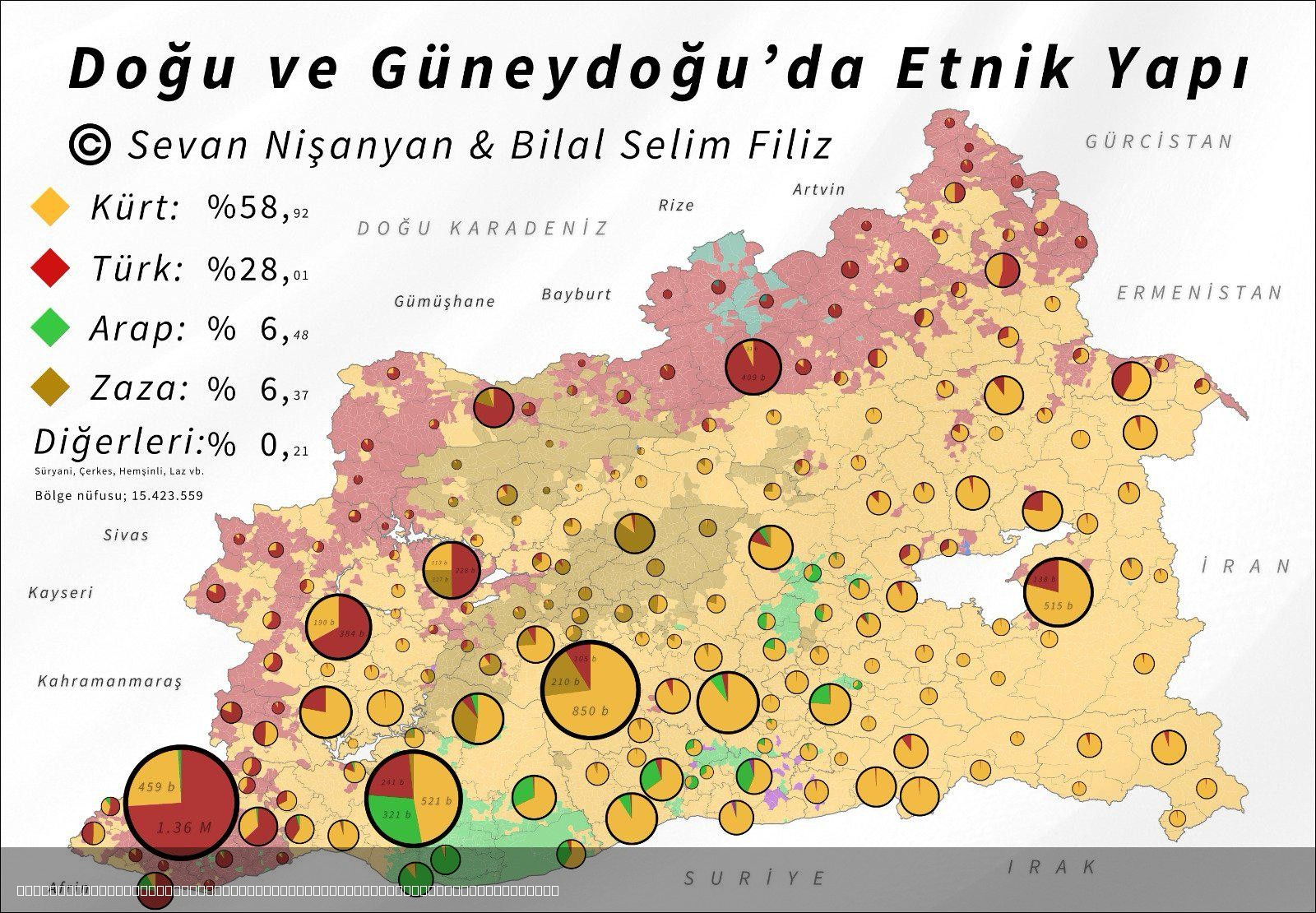Ethnic Map of Southern and Eastern Anatolian Regions of Turkey


David Chen
Data Visualization Specialist
David Chen is an expert in transforming complex geographic datasets into compelling visual narratives. He combines his background in computer science ...
Geographic Analysis
What This Map Shows
The "Ethnic Map of the Southern and Eastern Anatolian Regions of Turkey" provides a vivid visualization of the complex tapestry of ethnic groups residing in these historically rich areas. This map illustrates the diverse populations that coexist, highlighting where different ethnic communities are concentrated. By examining this map, we gain a deeper understanding of the social dynamics and historical context that shape these regions today.
Deep Dive into Ethnic Diversity in Turkey
Turkey is a nation steeped in a variety of cultures and ethnicities, a result of its unique geographical position at the crossroads of Europe and Asia. The Southern and Eastern Anatolian regions are particularly notable for their ethnic diversity, housing numerous groups such as Kurds, Arabs, Turkmen, and Assyrians, among others. Interestingly, the Kurdish population is one of the largest ethnic minorities in Turkey, primarily concentrated in cities like Diyarbakır and Mardin.
According to recent estimates, approximately 15-20% of Turkey's total population identifies as Kurdish, giving rise to a distinct cultural identity and demands for greater political representation. This demographic fact is crucial as it influences local politics, language rights, and cultural preservation efforts.
The Arab population, primarily located in the southeastern provinces bordering Syria, plays a significant role in the cultural landscape as well. Cities like Şanlıurfa and Gaziantep showcase a blend of Arab and Turkish influences, evident in cuisine, music, and traditions. The Turkmen community, which has roots tracing back to Central Asia, predominantly inhabits areas around Tarsus and Adana, contributing to the ethnic mosaic. The Assyrians, one of the oldest ethnic groups in the region, mainly reside around the historical city of Mardin, where their rich heritage can be seen in architecture and religious practices.
It's fascinating to note that these ethnic groups often maintain their languages, traditions, and customs despite the pressures of modernization and the centralization of the Turkish state. This preservation of identity not only enriches the cultural landscape of Turkey but also poses challenges regarding integration and coexistence, especially in times of political tension.
Regional Analysis
Breaking down the ethnic composition of the Southern and Eastern Anatolian regions reveals significant variations across the map. In the southeastern corner, regions like Hakkari and Şırnak are predominantly Kurdish, with cultural practices deeply intertwined with their historical narratives. Conversely, provinces like Adıyaman and Gaziantep reflect a more mixed demographic, with substantial Arab and Turkish populations coexisting.
For example, in Diyarbakır, the cultural revival of Kurdish identity is notable, with street art, music festivals, and literature sprawling throughout the city. On the other hand, cities such as Mardin and Nusaybin showcase an intricate blend of Kurdish, Arab, and Assyrian heritage, where the architecture alone tells stories of centuries-old coexistence.
Moreover, the economic opportunities and urban development in these regions contribute to demographic shifts. Cities like Gaziantep, known for its industry and commerce, attract a diverse range of migrants, leading to a more cosmopolitan atmosphere. In contrast, more rural areas may experience outmigration, affecting their demographic composition over time.
Significance and Impact
Understanding the ethnic makeup of Southern and Eastern Anatolia is essential for several reasons. First, it sheds light on ongoing sociopolitical dynamics within Turkey. The Kurdish issue, for instance, remains a contentious topic that affects national policies and regional stability. The demand for autonomy and cultural rights by various ethnic groups directly impacts Turkey's domestic policies and international relations.
Furthermore, as globalization continues to influence cultural practices, there is a growing need to address how these ethnic communities will adapt to modernity while preserving their unique identities. The interplay between tradition and contemporary life can lead to vibrant cultural exchanges but may also spark tensions if not managed carefully.
Looking ahead, demographic trends suggest that as urbanization increases, the ethnic landscape may evolve, potentially leading to new cultural syntheses or conflicts. By analyzing these changes now, policymakers and scholars alike can better prepare for the future of this diverse nation.
In conclusion, the "Ethnic Map of the Southern and Eastern Anatolian Regions of Turkey" is more than just a geographical visualization; it is a window into the complex interrelations between various ethnic groups in this fascinating part of the world. Understanding these dynamics is key to appreciating Turkey’s rich cultural heritage and navigating its future challenges.
Visualization Details
- Published
- August 2, 2025
- Views
- 228
Comments
Loading comments...